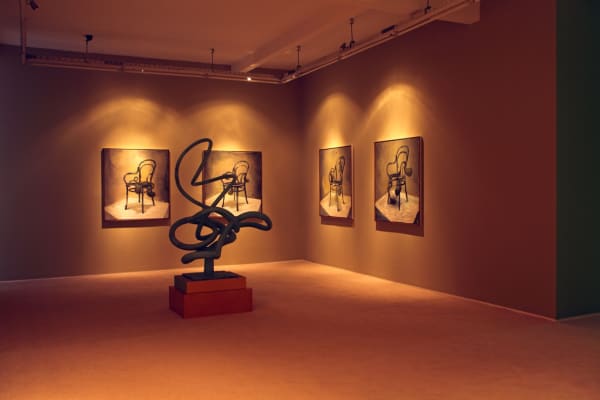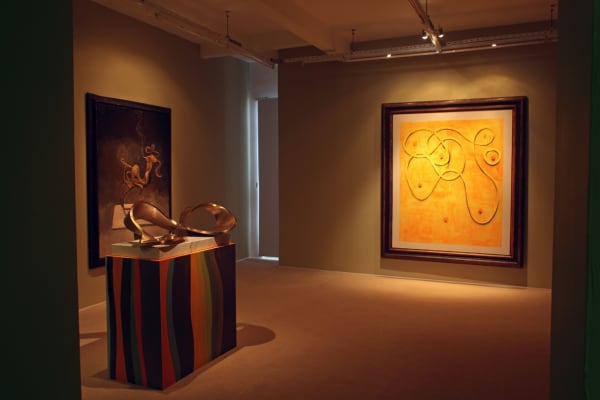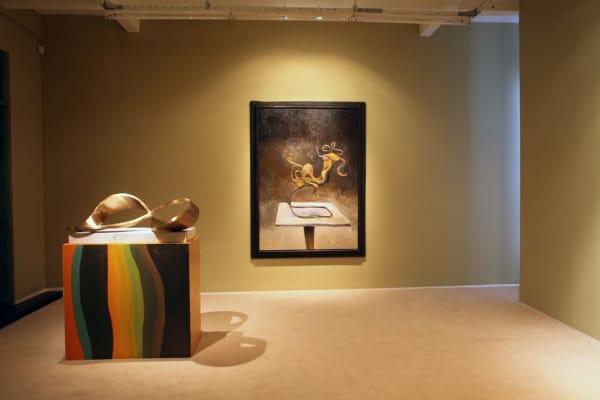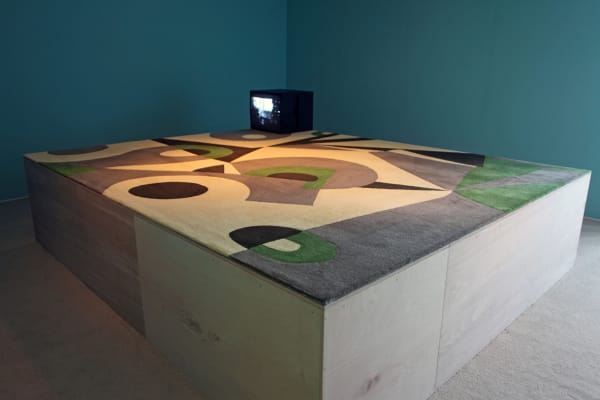Anti-Unconventional Painting: Anton Henning
Galerist is pleased to present the internationally renowned German artist Anton Henning’s first solo exhibition in Turkey entitled “Anti-Unconventional Painting”, between November 25 and December 31, 2010.
The exhibition will feature Henning’s recent paintings, sculpture, stained glasses, furniture, carpet and video works. In this site-specific installation which especially prepared for GALERIST, Henning not only intricately mapped out his works, framed them, lighted them, and chose the surrounding wall colors but also equipped Galerist with custom carpeting and stained glasses with special lighting.
Anton Henning is an artist who covers a lot of ground, and so much of it is self-referential. His art knows no limits: playful, ironical, light-footed yet profound, while always maintaining eye contact with art history. By executing every technique and discipline: painting, drawing, photography, video, collage, sculpture and installations, Henning's work proposes a radical revision of the boundaries which we position around a work of art.
Henning is anti-unconventional in his examination of traditional art genres (including portrait, landscape, nude and still life, in which he often blurs the boundaries between the genres) and his work frequently includes mixing and sampling the work of other artists, with humor and self-awareness that does not conform to contemporary expectations or fashions. His diverse subjects and styles, from abstract to figurative, from pin-up girls to interiors, are plundered knowingly and ironically from art history and popular culture.
In any given canvas, Henning switches between styles to produce paintings reflecting his style and places them in carefully constructed wooden frames with built-in diffuse lighting. His comfortable furniture, non representational bronze sculptures, portraits, still lives with vanitas symbolism in the spirit of the 17th century and abstract formats placed in his installations are the interpretations of Old masters.
As explained in Wolfgang Ullrich’s writing, by violating established patterns and expectations of taste, Henning displays complete freedom, combines figurative and abstract painting and doesn’t subjugate himself to a standard, an ideology, a style or an ideal of taste. “Precisely Anton Henning’s subtle violations of the rules convey a notion of what it means to posses a good taste of bad taste or a ‘taste for the tasteless’. Bad painting is also something very elitist. Self reflexive taste is needed not just to create according to products but also to be able to deal with them. However rude and purportedly archaic Bad Painting may appear at first glance, all the more does it presuppose a culture sufficiently elaborated to be able to transcend and disclaim its own sellf”. According to Ullrich, only somebody confident of the security of his position, “can afford to do without that which belongs to good taste, without forms of undisrupted beauty, and instead take delight in ironical, provocative and absurd special forms of the aesthetic.”
It is precisely expressed by Thomas Wagner in his writing; Henning draws on many sources and treat the spirits he invokes by encountering them with irony, possibly with Romantic irony. He romanticizes something by giving to ”what is commonplace a lofty meaning, to what is conventional a recondite appearance, to what is familiar the dignity of the unfamiliar, the finite the appearance of infinity”. Henning is both a Romantic and its opposite. He collects his art from fragments and prescribes loosening up exercises in every place”. When he realizes that there can be no escape from this vicious circle, abstract or figurative images of life, Henning simply tightens the screw a few turns and “he encounters distance with even more detachment, irony with irony. Like Duchamp, he too, has become a meta-ironist.”
About the Artist
Anton Henning lives and works in Manker, Germany. Anton Henning has exhibited widely in museums and galleries internationally. He was recently the focus of solo exhibitions at Zach Feuer Gallery in New York; Haunch of Venison, London (both 2010); DePont Museum of Contemporary Arts, Tilburg; the Wilhelm-Hack-Museum, Ludwigshafen; Kunsthalle Mannheim; Haus am Waldsee, Berlin; Georg-Kolbe Museum, Berlin and Galerie Bob van Orsouw, Zurich(all 2009); Gemeentemuseum, Den Haag(2008); S.M.A.K Stedelijk Museum voor Actuele Kunst, Gent; Arp Museum, Remagen(both 2007); Museum Haus Esters,Krefeld(2005); Museum für Moderne Kunst, Frankfurt am Main; and MARTa Herford (all 2005). Anton Henning's work is represented in the permanent collections of numerous museums including Sammlung Essl, Klosterneuburg; Fred Jones Jr. Museum of Art, University of Oklahoma; Frieder Burda Museum, Baden Baden; Gemeentemuseum, Den Haag; Magasin 3, Stockholm; MOCA, Los Angeles; National Museum of Art, Osaka; Neues Museum, Nürnberg; Valencia Art Contemporaneo, Valencia; Kunstmuseum, Luzern; Arp Museum, Rolandseck; Galerie für Zeitgenössische Kunst, Leipzig; Museum für Moderne Kunst, Frankfurt am Main; Krefelder Kunstmuseen, Krefeld; De Pont Museum of Contemporary Art, Tilburg and Museum of Contemporary Art, Kansas City, and the Hammer Museum in Los Angeles.









